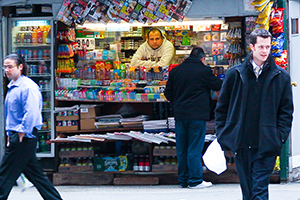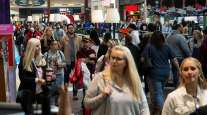Consumer Spending Rises in January by Most in Eight Months

Consumer purchases climbed in January by the most in eight months, fueled by faster earnings growth and indicating the biggest part of the U.S. economy gained momentum at the start of 2016.
The 0.5% advance followed a 0.1% gain the prior month, a Commerce Department report showed Feb. 26. The January figure exceeded the 0.3% median forecast in a Bloomberg News survey. Incomes also climbed 0.5%, more than projected. The Federal Reserve’s preferred measure of inflation rose by the most since October 2014.
Steady hiring, cheap gasoline and rising home values are powering Americans’ ability to boost spending, which accounts for almost 70% of the economy. Households are broadening out purchases beyond big-ticket items such as cars and houses, which bodes well at a time manufacturing is weak.
“It’s a very positive story for consumers,” Scott Brown, chief economist at Raymond James Financial Inc. in St. Petersburg, Florida, said before the report. “They’ve got job growth, wage growth and low fuel prices. Spending will be strong enough to carry the economy through this year and avoid a recession.”
A separate report from the Commerce Department, also issued Feb. 26, showed gross domestic product expanded at a revised 1% annualized rate in the fourth quarter, faster than the previously reported 0.7% advance and reflecting a higher value of business inventories.
Projections for January consumer spending ranged from a decline of 0.1% to a gain of 0.5%, according to the Bloomberg News survey. The previous month’s reading initially was reported as unchanged.
The Bloomberg survey median for incomes called for a rise of 0.4%, after a previously reported 0.3% gain. The January gain was the most since June.
Adjusted for the effect of price changes, spending increased 0.4%, the most since May.
Disposable income, or the money left over after taxes, rose 0.4% for a second month, after adjusting for inflation. The saving rate held at 5.2%. Wages and salaries advanced 0.6% after a 0.2% increase.
Among other details, household outlays on services rose 0.3% after adjusting for inflation. The category, which includes tourism, legal help, health care and personal care items such as haircuts, is typically difficult for the government to estimate accurately.
Services spending for last month probably reflected a surge in utility use as colder temperatures returned in January after an unseasonably warm December. A winter storm also blanketed the Mid-Atlantic and Northeast with snow late last month.
Spending on durable goods, which includes automobiles, increased 1.1% after adjusting for inflation, while outlays for nondurable goods, which include gasoline, rose 0.4%.
The Federal Reserve’s preferred measure of inflation picked up, the report showed. The price gauge based on the personal consumption expenditures index increased 0.1% from the prior month and was up 1.3% from a year earlier. Inflation hasn’t reached the Fed’s 2% goal since April 2012.
The core price measure, which excludes food and fuel, rose 0.3% from the prior month and climbed 1.7% from January 2015, which was the most since November 2012.
Fed policymakers are trying to balance concern over market turmoil and slowing overseas economies with signs that U.S. inflation is picking up. They held the target for the benchmark fed funds rate at 0.25-0.5% in January after lifting rates at the December meeting for the first time since 2006.




